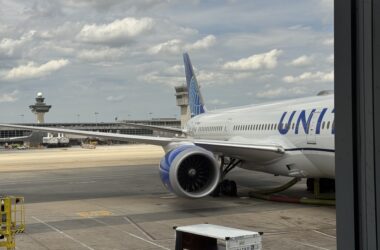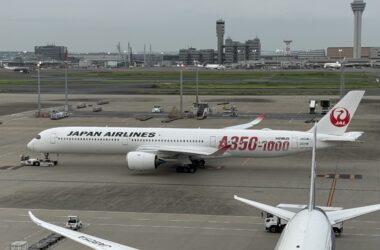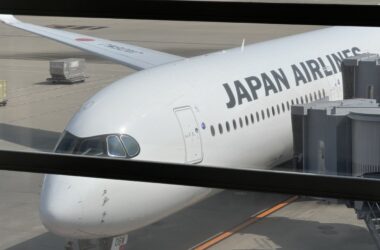Following a magnitude 8.8 earthquake off the Kamchatka Peninsula in Far East Russia in late July, a series of volcanoes have erupted in the region, blowing volcanic ash clouds into the air.
This is now causing an impact on air traffic over the Pacific Ocean. Many flights have been forced to deviate from the fastest and most fuel-efficient route and avoid the volcanic ash.
Typically, flights between the US East Coast and East Asia opt for a route over Alaska and the Northern Pacific Ocean, off the coast of Russia.
This is what the Northern Pacific looked like today at 06:00 UTC:
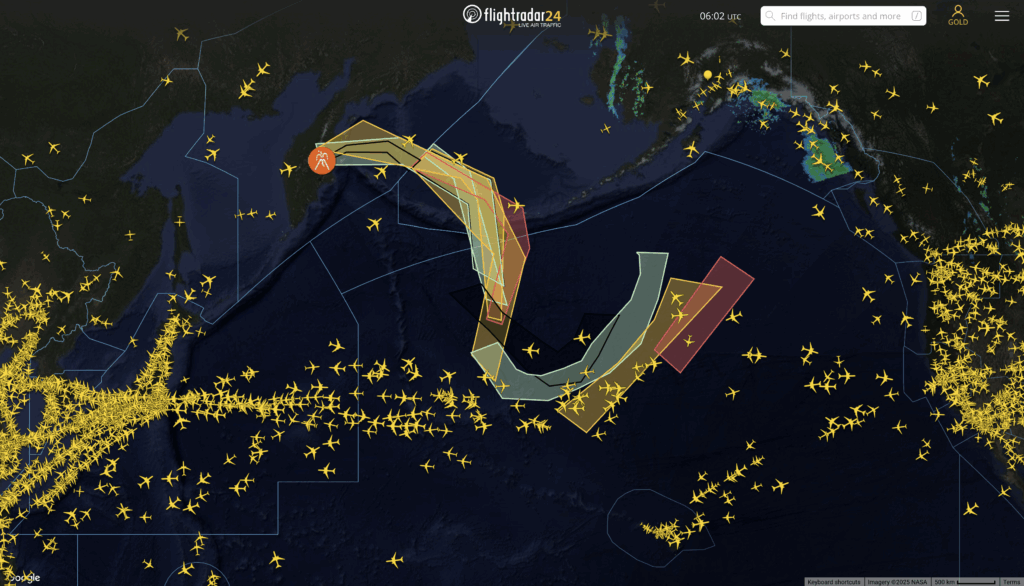
Flightradar24 has a nice feature of marking areas affected by the volcano. As you can see, there are only a few planes over the northern Pacific today.
Let’s take my most frequented international flight, Japan Airlines flight JL3 from New York to Tokyo, as an example.
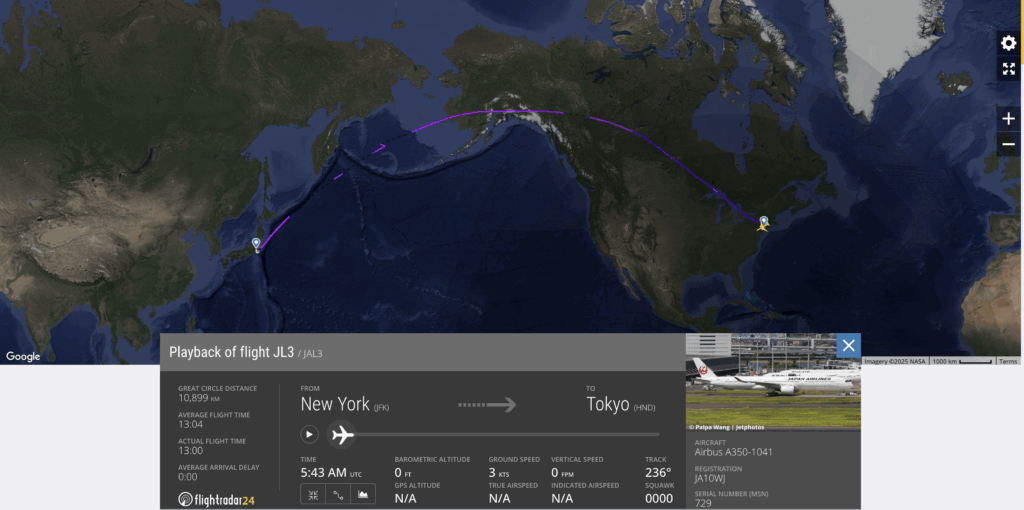
Here’s one from a few days ago, when the effects of the volcano were still minimal. This is a typical route that flight JL3 takes; over Canada, Alaska, and then down over the North Pacific just off the coast of Russia (it sometimes used to directly fly over Russia before the Ukraine War, depending on winds).
The total flight time on this day was 13 hours and 4 minutes. This is about the typical flight time.
Let’s compare this with yesterday’s flight:
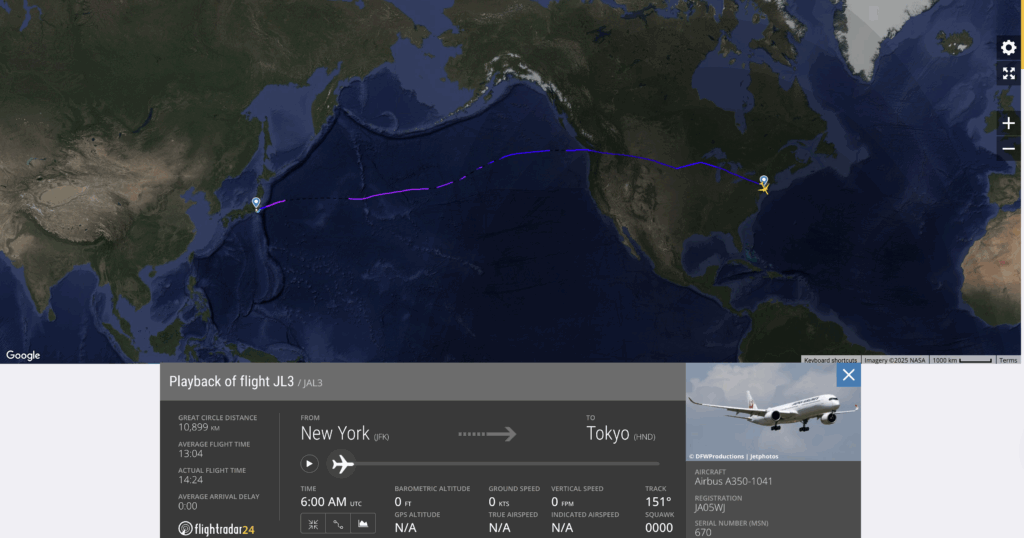
This flight flew over the Continental US, near Seattle and Vancouver, instead of Alaska. This route took 14 hours and 24 minutes, well over an hour of flight time compared to the one a few days ago.
The effects of this volcano tend to be more pronounced on westbound flights, since they have to fight the jet stream, which goes east. Eastbound flights may benefit from favorable winds over the Pacific, but westbounds flights can’t, and almost always rely on the great circle route as the most efficient route.
Deviations like this happen every once in a while, whether that’s a volcano or something else. I remember earlier this year when Russian missile tests in the Northern Pacific region forced flights to deviate in a similar manner to this:
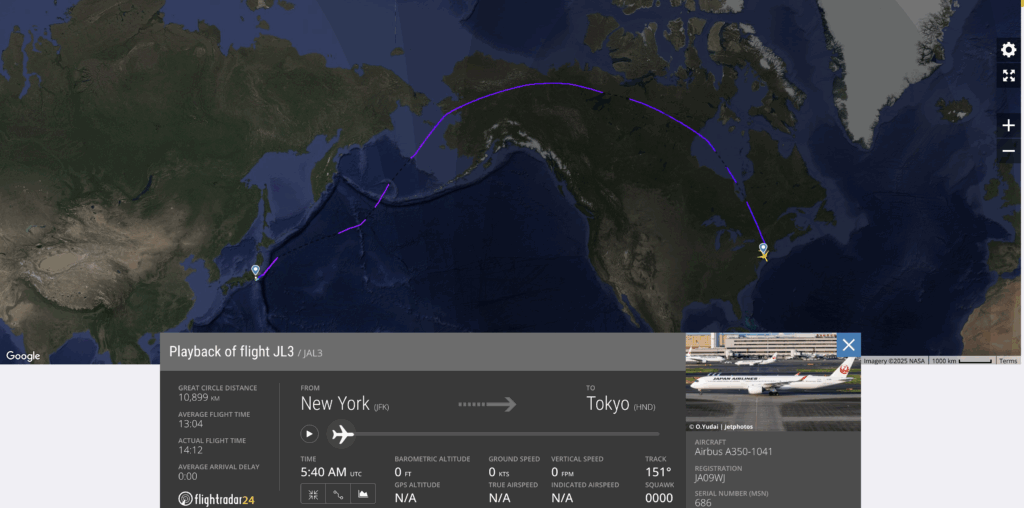
This is flight JL3 from February 27, 2025. You can see the aircraft make a noticeable deviation away from Russia, as that’s the area where the missile tests were happening. It doesn’t seem like a lot on the map, but it was still enough to force a flight time of 14 hours and 12 minutes.
Bottom Line
The effects of this month’s volcanic activity could linger for some time. Most flights over the Pacific will be longer, and some might require fuel stops. This is the glamour of air travel and Mother Nature!
Featured image by the author.







